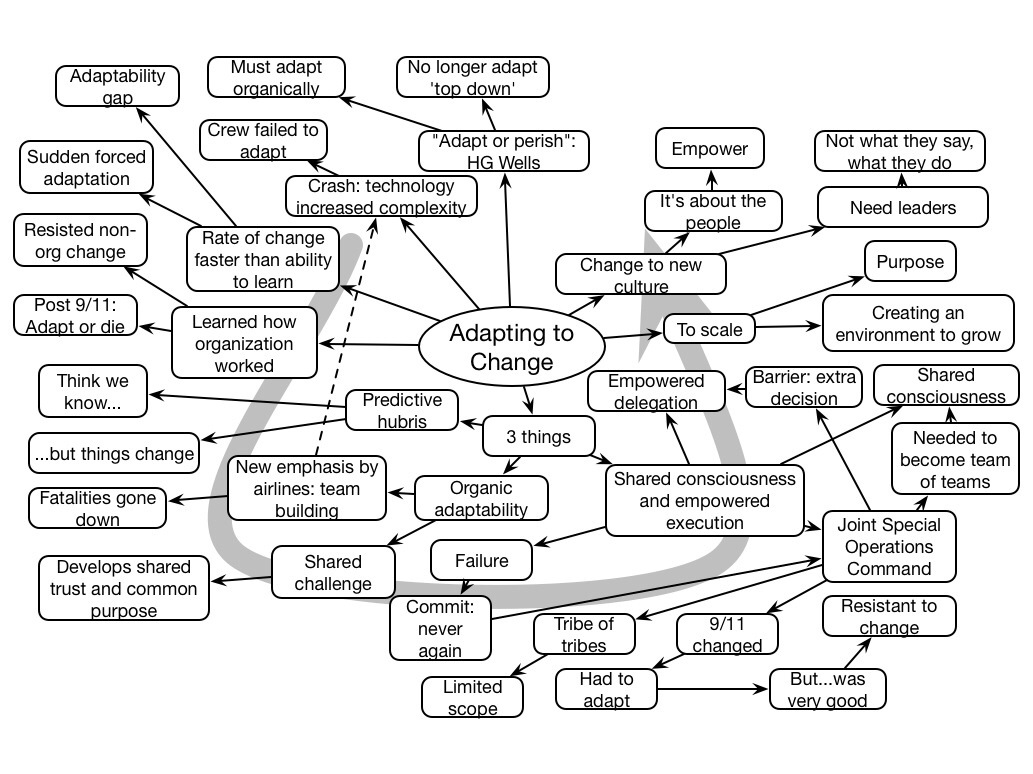I previously wrote about Sutton & Rao’s Scaling up Excellence, and have now finished a quick read of Connors & Smith’s Change the Culture, Change the Game. Both books cover roughly the same area, but in very different ways. Sutton & Rao’s was very descriptive of the changes they observed and the emergent lessons. Connors & Smith, on the other hand, are very prescriptive. Yet both are telling similar stories with considerable overlap.
Let’s be clear, Connors & Smith have a model they want to sell you. You get the model up front, and then implementation tools in the second half. Of course, you aren’t supposed to actually try this without having their help. As long as you’re clear on this aspect of the book, you can take the lessons learned and decide whether you’d apply them yourself or use their support.
They have a relatively clear model, that talks about the results you want, the actions people will have to take to get to the results, the beliefs that are needed to guide those actions, and the experiences that will support those beliefs. They aptly point out that many change initiatives stop at the second step, and don’t get the necessity of the subsequent two steps. It’s a plausible story and model, where the actions, beliefs, and experiences are the elements that create the culture that achieves the results.
Like Kirkpatrick’s levels, the notion is that you start with the results you need, and work backward. Further, everything has to be aligned: you have to determine what actions will achieve the new results, and then what new beliefs can guide those new actions, and ultimately what experiences are needed to foster those new beliefs. You work rigorously to only focus on the ones that will make a difference, recognizing that too much will impact the outcome.
The second half talks about tools to foster these steps. There are management tools, leadership skills, and integration steps. There’s necessary training associated with these, and then coaching (this is the sales bit). It’s very formulaic, and makes it sound like close adherence to these approaches will lead to success. That said, there is a clear recognition that you need to continually check on how it’s going, and be active in making things happen.
And this is where there’s overlap with Sutton & Rao: it’s about ongoing effort, it requires accountability (being willing to take ownership of outcomes), people must be engaged and involved, etc. Both are different approaches to dealing with the same issue: working systematically to make necessary changes in an organization. And in both cases, the arguments are pretty compelling that it takes transparency and commitment by the leadership to walk the talk. It’s up to the executives to choose the needed change, but the empowerment to find ways to make that happens is diffused downward.
Whether you like the more organic approach of Sutton & Rao or the more formulaic model of Connors & Smith, you will find insight into the elements that facilitate change. For me, the synergy was nice to see. Now we’ll see if these are still old-school by comparison to Laloux’s Reinventing Organizations, that has received strong support from some colleagues I have learned to trust.
#itashare
